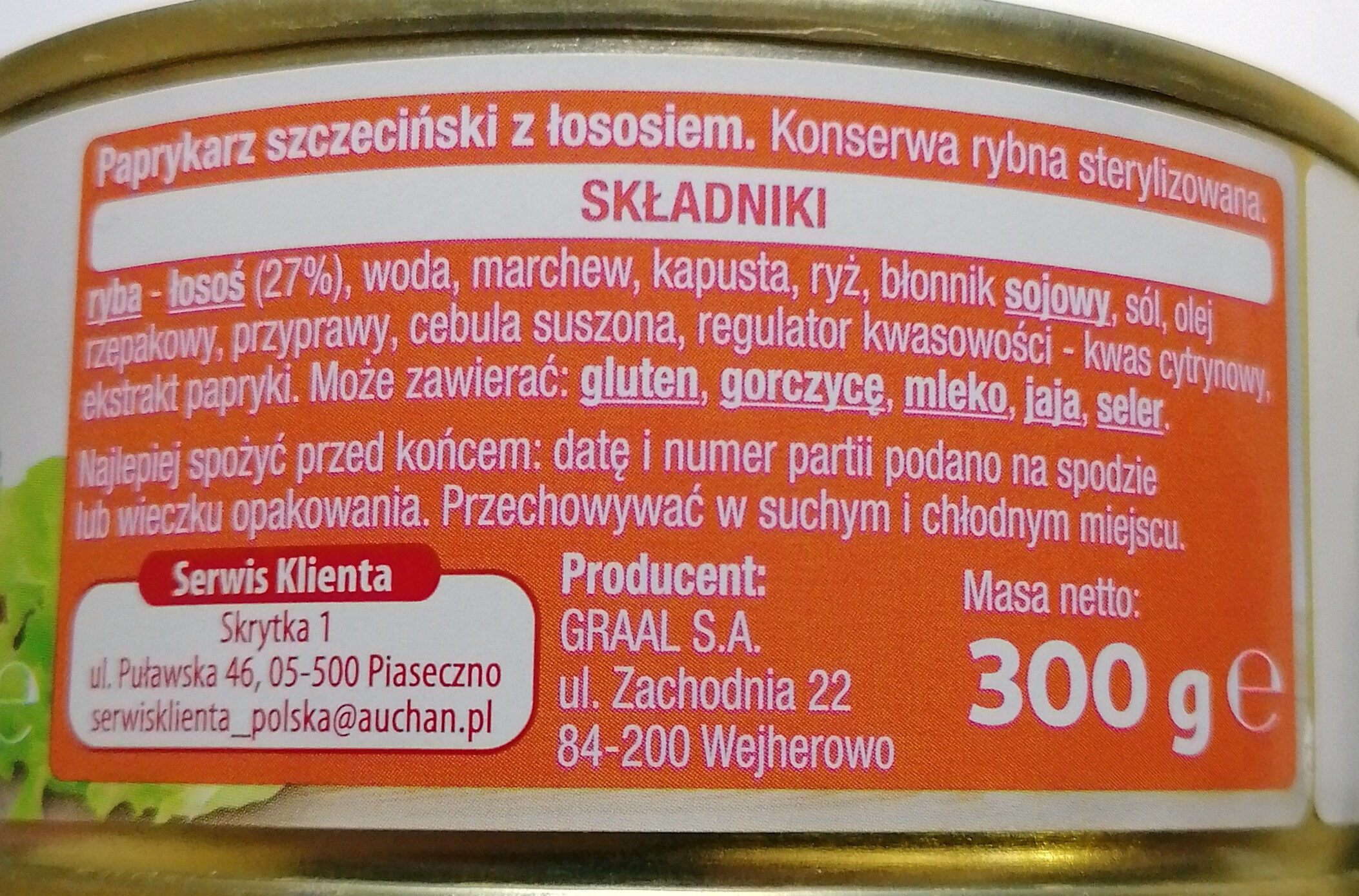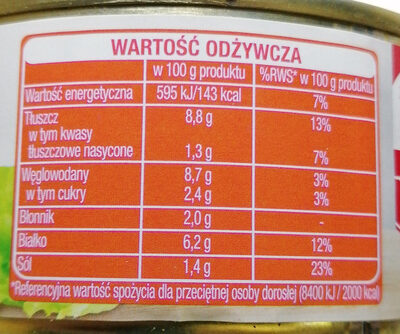Paprykarz Szczeciński z łososiem. - Graal - 300 g
This product page is not complete. You can help to complete it by editing it and adding more data from the photos we have, or by taking more photos using the app for Android or iPhone/iPad. Thank you!
×
Barcode: 5904215141884 (EAN / EAN-13)
Quantity: 300 g
Packaging: Metal, Steel, pl:Puszka
Categories: Seafood, Fishes and their products, Canned foods, Fishes, Spreads, Canned fishes, Fish preparations, Fish spreads, Szczecin paprikash
Manufacturing or processing places: PL 84-200, Wejherowo, Polska
Traceability code: PL 22111853 WE
Stores: Auchan
Countries where sold: Poland
Matching with your preferences
Environment
Packaging
Transportation
Report a problem
Data sources
Product added on by pyrka
Last edit of product page on by arc2.
Product page also edited by openfoodfacts-contributors, packbot, sierigh.
If the data is incomplete or incorrect, you can complete or correct it by editing this page.










